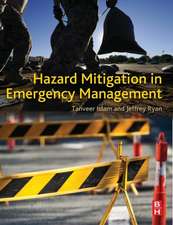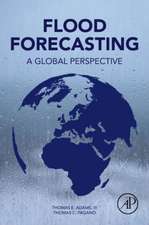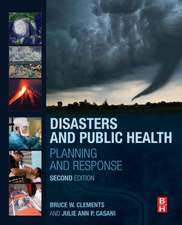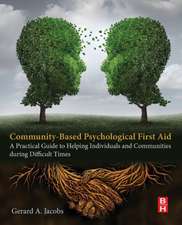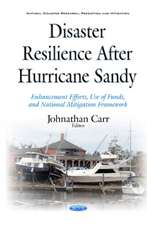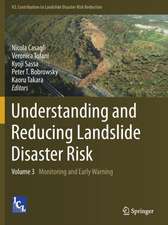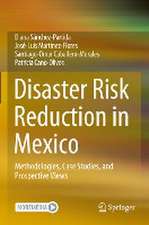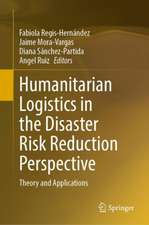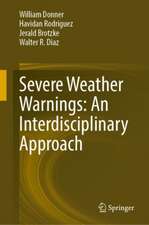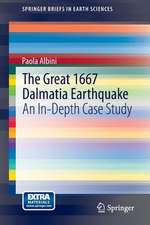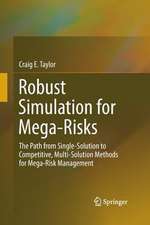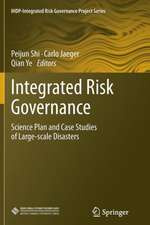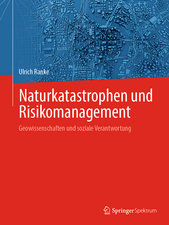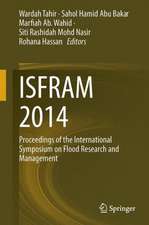Natural Disaster Risk Management: Geosciences and Social Responsibility
Autor Ulrich Rankeen Limba Engleză Hardback – 30 sep 2015
| Toate formatele și edițiile | Preț | Express |
|---|---|---|
| Paperback (1) | 539.26 lei 6-8 săpt. | |
| Springer International Publishing – noi 2016 | 539.26 lei 6-8 săpt. | |
| Hardback (1) | 714.99 lei 6-8 săpt. | |
| Springer International Publishing – 30 sep 2015 | 714.99 lei 6-8 săpt. |
Preț: 714.99 lei
Preț vechi: 841.17 lei
-15% Nou
Puncte Express: 1072
Preț estimativ în valută:
136.81€ • 143.23$ • 113.20£
136.81€ • 143.23$ • 113.20£
Carte tipărită la comandă
Livrare economică 05-19 aprilie
Preluare comenzi: 021 569.72.76
Specificații
ISBN-13: 9783319206745
ISBN-10: 3319206745
Pagini: 400
Ilustrații: XX, 514 p. 132 illus., 117 illus. in color.
Dimensiuni: 155 x 235 x 34 mm
Greutate: 0.92 kg
Ediția:1st ed. 2015
Editura: Springer International Publishing
Colecția Springer
Locul publicării:Cham, Switzerland
ISBN-10: 3319206745
Pagini: 400
Ilustrații: XX, 514 p. 132 illus., 117 illus. in color.
Dimensiuni: 155 x 235 x 34 mm
Greutate: 0.92 kg
Ediția:1st ed. 2015
Editura: Springer International Publishing
Colecția Springer
Locul publicării:Cham, Switzerland
Public țintă
GraduateCuprins
Introduction.- Responsibility of Geoscience in Natural Disaster Risk Management.- General Aspects.- Natural Disaster vs. Extreme Events.- Society of Risk.- Definitions of Hazard, Vulnerability and Risk.- General Aspects.- Definitions.- Hazard Assessment.- Disaster Statistics.- One Hazard Distribution.- Hazard Cascade.- Multiple Hazard Distribution.- Multiple Hazard Assessment Application.- Vulnerability Assessments.- General Aspects.- Definition Vulnerability.- Social and Cultural Vulnerability.- Economic Vulnerability.- Ecological Vulnerability.- Risk Assessments General Aspects.- Definition.- Loss Damage Curve, Frequency vs. Probability.- Social Amplification of Risk.- Societal Resilience.- Risk Assessment.- Risk Communications.- General Aspects Risk Perception.- Role of Media.- Communication by Officials.- Communication within Emergency Management Organizations.- Risk Management.- Mitigation.- Increasing Resilience.
Recenzii
“Ranke … has written a very timely, well-organized, comprehensive textbook that will be remarkably valuable to earth scientists in many disciplines throughout the world. Climatologists, hydrologists, geophysicists, volcanologists, and sedimentologists are just some specialists who will find this book an important resource. … This guide and accompanying free software will be very useful to students studying natural disaster risks. … Summing Up: Highly recommended. Upper-division undergraduates and above.” (M. S. Field, Choice, Vol. 53 (9), May, 2016)
Notă biografică
Prof. Dr. Ulrich Ranke, born in 1947, studied Geology at the University of Goettingen, Germany, where he later wrote his doctoral thesis on the marine sediments of the Northern Adriatic Sea in 1974. He joined the German Geological Survey (BGR) the same year, and worked for an extended period as a petroleum advisor to Bangladesh and Pakistan. For three years he was assigned to the Federal German Ministry for Technical Cooperation and Development as seconded expert for integrating geoscience in social and economic development projects. Later he became Head of the Department for Principles of Technical Cooperation, making him responsible for the BGR’s project planning and evaluation in the context of international cooperation. During this time, he travelled to more than 30 countries, mostly in Asia, but also in southern Africa and the Arabian Peninsula. In 2002, he was assigned as project leader for German-Indonesian technical cooperation in the field of natural disaster risk management.In the aftermath of the 2004 tsunami disaster he served for many years in an advisory capacity to the Indonesian government concerning disaster risk management and the institutionalization of the German-Indonesian Tsunami Early Warning System. After returning from Indonesia to Germany in 2007, he was invited to hold lectures on natural disaster risk management at the Universities of Bonn and Clausthal. The following year, he was elected an honorary professor by the Geological Faculty at the University of Goettingen, where, since his retirement in 2012, he has continued to hold lectures on project management, planning and project evaluation.
Textul de pe ultima copertă
Many aspects of disaster risk management, such as for earthquakes, volcanic eruptions, floods, avalanches and mudslides call for similar prevention and preparedness instruments, management concepts, and countermeasures. This textbook assumes the viewpoint of a regional disaster risk manager who is responsible for a certain area, and for making the lives of the people who live there safer, regardless of the type of natural disaster that may occur. The same holds true for boosting preparedness and awareness in the population at risk. The book includes numerous examples of hazard mitigation concepts and techniques, as well as ways of intensively involving the local population in prevention schemes at an early stage. Furthermore, this textbook provides an in-depth examination of the function of risk communication, both as an instrument for official information dissemination and as a function of public media. To close, a chapter on risk splitting offers insights into insurance-based models for risk financing.
.
.
Caracteristici
Centered on the disaster management cycle Draws on many recent and essential case studies Provides extensive social and economic orientation Includes supplementary material: sn.pub/extras

